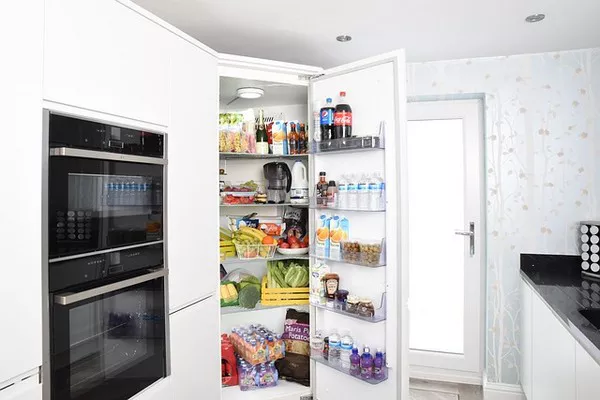Industrial refrigeration is a critical component of many manufacturing and processing operations. It involves the use of refrigeration systems to control temperature and preserve perishable goods, ensuring efficiency, safety, and quality. This article will explore the principles of industrial refrigeration, its applications, types of systems, and the technology behind it.
As industries continue to grow, the need for efficient refrigeration systems becomes increasingly important. From food processing and pharmaceuticals to chemical manufacturing, industrial refrigeration plays a vital role in maintaining product quality and safety. Understanding how these systems work and their applications can help businesses make informed decisions about their refrigeration needs.
The Basics of Refrigeration
What is Refrigeration?
Refrigeration is the process of removing heat from a designated area to lower its temperature. This process involves the transfer of heat from a cooler area to a warmer one, utilizing the principles of thermodynamics. In industrial settings, refrigeration is essential for preserving perishable products, controlling environmental conditions, and ensuring operational efficiency.
The Refrigeration Cycle
The refrigeration cycle is the fundamental process used in refrigeration systems. It consists of four main stages:
Evaporation: The refrigerant absorbs heat from the environment, causing it to evaporate into a gas.
Compression: The gas is compressed, increasing its temperature and pressure.
Condensation: The hot gas releases heat as it condenses back into a liquid.
Expansion: The liquid refrigerant expands, reducing its pressure and temperature, and the cycle begins again.
Types of Industrial Refrigeration Systems
1. Vapor Compression Refrigeration Systems
Vapor compression systems are the most common type of refrigeration used in industrial applications. These systems utilize a refrigerant that changes state between liquid and gas, enabling efficient heat transfer.
Components:
Compressor: Compresses the refrigerant gas, increasing its pressure and temperature.
Condenser: Releases heat from the refrigerant, allowing it to condense into a liquid.
Expansion Valve: Reduces the pressure of the liquid refrigerant, causing it to cool.
Evaporator: Absorbs heat from the environment, causing the refrigerant to evaporate.
2. Absorption Refrigeration Systems
Absorption refrigeration systems use heat energy instead of mechanical energy to drive the refrigeration cycle. These systems are often used in locations where electricity is limited or where waste heat is available.
Components:
Absorber: Absorbs the refrigerant into a solution.
Generator: Provides heat to separate the refrigerant from the solution.
Condenser: Similar to vapor compression systems, it cools and condenses the refrigerant.
Expansion Valve: Reduces the refrigerant pressure.
3. Cascade Refrigeration Systems
Cascade systems use multiple refrigeration cycles to achieve very low temperatures. These systems are commonly used in applications like cryogenics or for products requiring extreme cooling.
Components:
High-Temperature Cycle: Handles the initial cooling using a standard refrigerant.
Low-Temperature Cycle: Operates with a different refrigerant that can achieve much lower temperatures.
Applications of Industrial Refrigeration
1. Food Processing and Storage
One of the primary applications of industrial refrigeration is in the food industry. Refrigeration systems are used to keep food products at safe temperatures, preserving freshness and preventing spoilage.
Cold Storage: Refrigerated warehouses store perishable goods such as meat, dairy, and fruits.
Food Processing: Refrigeration is essential in processes like freezing, chilling, and pasteurization.
2. Pharmaceuticals
In the pharmaceutical industry, maintaining specific temperatures is crucial for the storage of medications and vaccines. Industrial refrigeration systems ensure that these products remain effective and safe for consumption.
3. Chemical Manufacturing
Many chemicals require strict temperature controls during production and storage. Industrial refrigeration helps manage these temperatures, preventing reactions that could lead to hazardous situations.
4. Ice Rinks and Leisure Facilities
Refrigeration systems are essential for maintaining the ice surface in rinks and other recreational facilities. They help control the temperature of the ice to ensure optimal conditions for skating and other activities.
5. HVAC Systems
Industrial refrigeration principles are applied in HVAC (Heating, Ventilation, and Air Conditioning) systems to control temperature and humidity in large buildings and facilities.
Advantages of Industrial Refrigeration
Food Safety: Preserves perishable goods, reducing waste and spoilage.
Quality Control: Maintains product quality during processing and storage.
Energy Efficiency: Modern systems are designed for optimal energy use, reducing operational costs.
Versatility: Applicable across various industries, from food to pharmaceuticals and chemicals.
Challenges in Industrial Refrigeration
1. Energy Consumption
Refrigeration systems can be energy-intensive, leading to high operational costs. Optimizing energy use and utilizing energy-efficient technologies is essential for reducing expenses.
2. Environmental Impact
Refrigerants used in industrial systems can contribute to greenhouse gas emissions. Transitioning to eco-friendly refrigerants and implementing sustainable practices are crucial for minimizing environmental impact.
3. Maintenance and Reliability
Industrial refrigeration systems require regular maintenance to ensure optimal performance. Unexpected failures can lead to significant losses, making proactive maintenance essential.
Future Trends in Industrial Refrigeration
1. Energy Efficiency Improvements
The industry is increasingly focused on improving energy efficiency through advanced technologies and automation. This trend helps reduce operational costs and environmental impact.
2. Eco-Friendly Refrigerants
As regulations become stricter, many industries are transitioning to low-GWP (Global Warming Potential) refrigerants that have less impact on the environment.
3. IoT and Smart Technologies
The integration of IoT (Internet of Things) technologies allows for real-time monitoring and control of refrigeration systems, improving efficiency and reliability.
Conclusion
Industrial refrigeration is a vital aspect of various industries, ensuring the preservation of products, safety, and efficiency. Understanding the different types of refrigeration systems and their applications can help businesses optimize their operations and meet regulatory standards. As technology continues to advance, the future of industrial refrigeration will focus on energy efficiency, sustainability, and smart technologies, ensuring its relevance in a rapidly changing world.
Related topics:

